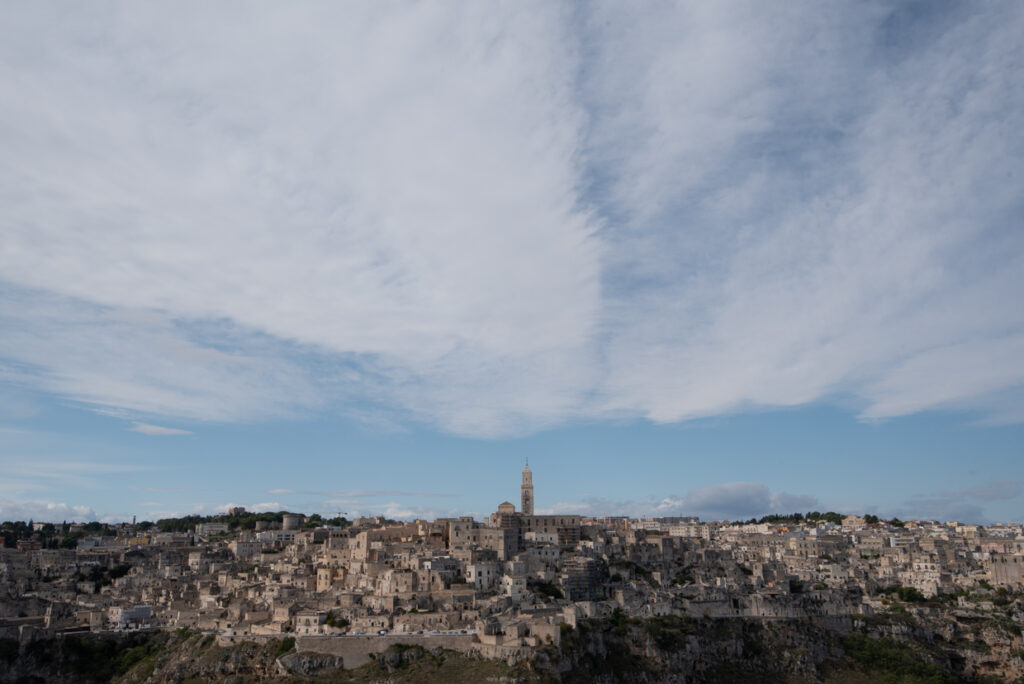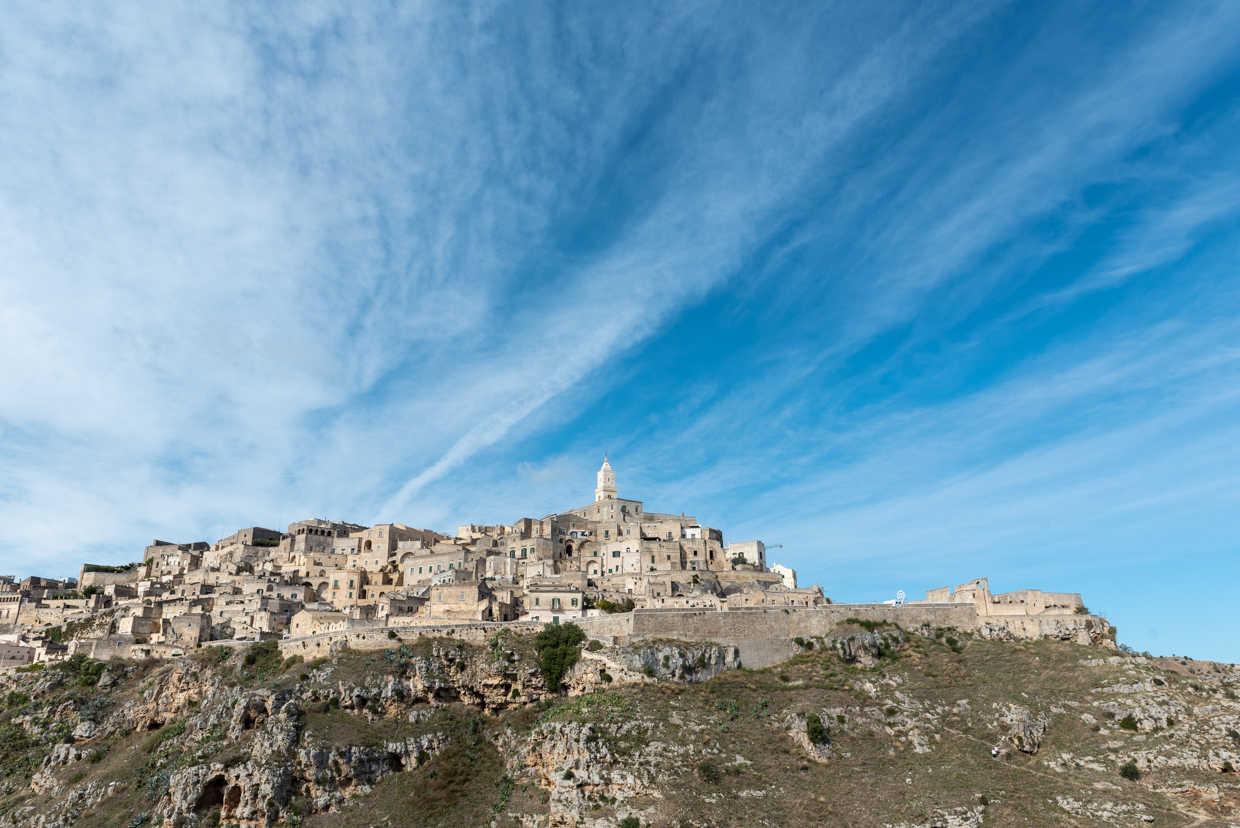From Jesus To James Bond
How the movie industry changed a South Italian city
A vast landscape. Raptors circling over a barren hill. An ancient town, tossed like a crown of thorns on a bare scalp. Zoom in. Beige-colored lime stone houses stand cuddled together. Staircases and walls melt into a maze, where windows gaze like hollow eyes. Close Up. A narrow street snakes uphill, and with the roaring sound of horsepower a silver Martin speeds uphill, chased by a motorcycle and a helicopter. The silver bullet skids as it makes a right onto the town square and comes to an abrupt halt in front of the cameras. “Cut!”
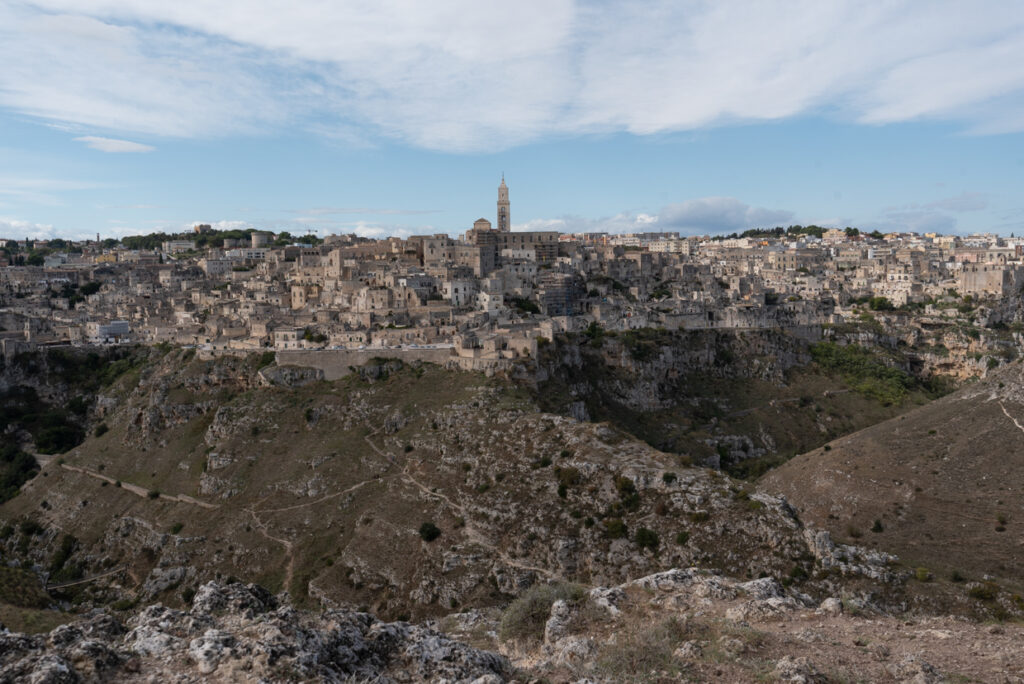
The South Italian cave-city Matera serves as a breathtaking setting for one of the most expensive movie productions in history, No Time To Die, the impatiently awaited 25th installment of the James Bond series. Slap bang in the middle of Italy’s notoriously poor and crime-stricken Basilicata region, the city once known for abhorrent squalor has benefitted tremendously from the movie industry.
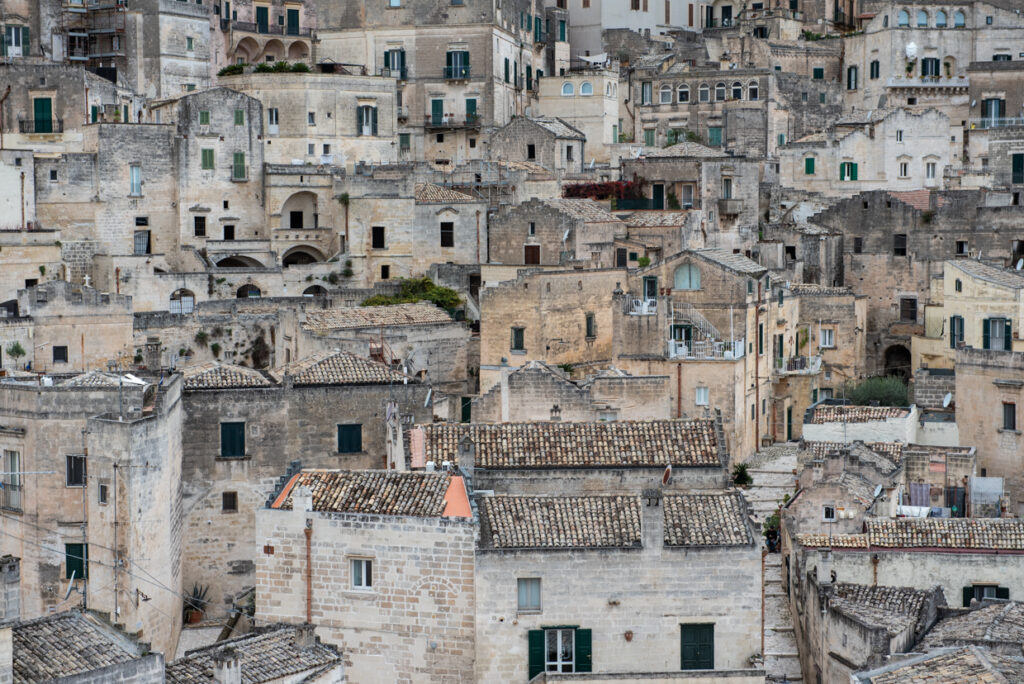
In the past fifty years, fifty-four major films have been shot in the Sassi. These 10,000-year old cave dwellings, which make Matera the oldest permanently inhabited city in the world, have added drama to major Hollywood blockbusters such as Wonder Woman (2017), Ben Hur (2016), and, most importantly, a myriad of biblical films. At least eight times did Jesus Christ die and rise again in Matera.
The shooting of 007 caused chaos in the lively city center. In a high speed chase, one of the five Aston Martins was turned to scrap metal. The parade of celebrities attracted wannabe-paparazzi: French starlet Léa Seydoux, who returned as love interest, and veteran secret service agent Daniel Craig stayed at the Palazzo Gattini Luxury Hotel at Piazza Duomo, a 5-star hotel opposite of the 13th century Basilica Santa Maria della Bruna, overlooking the old town. But Materans don’t mind the traffic jams.
The accommodation and catering of the crew of four hundred was a boost for local businesses. Then Mayor Raffaele di Ruggiero spoke of €12 million to flow into Matera’s economy – a number surpassing the Gibson effect, the €10 million profit Mel Gibson’s blockbuster “The Passion of Christ” afforded Matera in 2004.
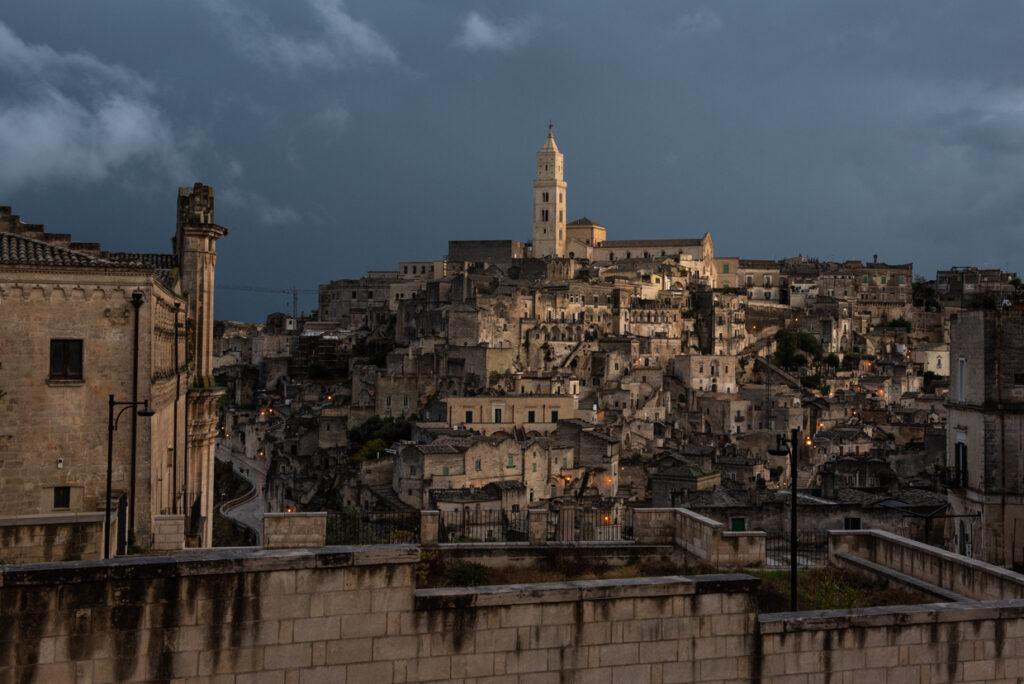
“The first time I saw her, I lost my mind, because she was simply perfect,” the catholic Australian Gibson said of the ancient city in a press statement. Gibson’s account of Jesus’ final hours was a gory tale. When Jesus (played by Jim Cazeviel) collapsed on a steep staircase in the Sassi, barrels of fake blood were poured down the ancient cobbles. 600 extras in leather sandals stood in as the angry mob as Cazeviel was picturesquely crucified on the Belvedere of Murgia Timone, a hill overlooking Matera.
Passion of Christ turned into one of the highest grossing movies of all time. For Matera, the blessing lay in the controversy the film’s violence and alleged antisemitic undercurrent caused. The town was catapulted into the headlines worldwide, and onto the travel maps. Tourists, who traditionally stuck to the sundrenched beaches of Southern Italy, started venturing inland. Travel agencies organized Passion Tours that catered to American tourists wishing to step into the savior’s footprints.
The artistic value of Passion of the Christ remains open for discussion, but tourism has sky-rocketed in Matera since. The Sassi are refurbished into AirBnBs, into boutique hotels and restaurants. For visitors strolling along the cobble stones the sight of white-teethed Roman soldiers slurping cappuccino in one of the many cave-cafés is not uncommon.
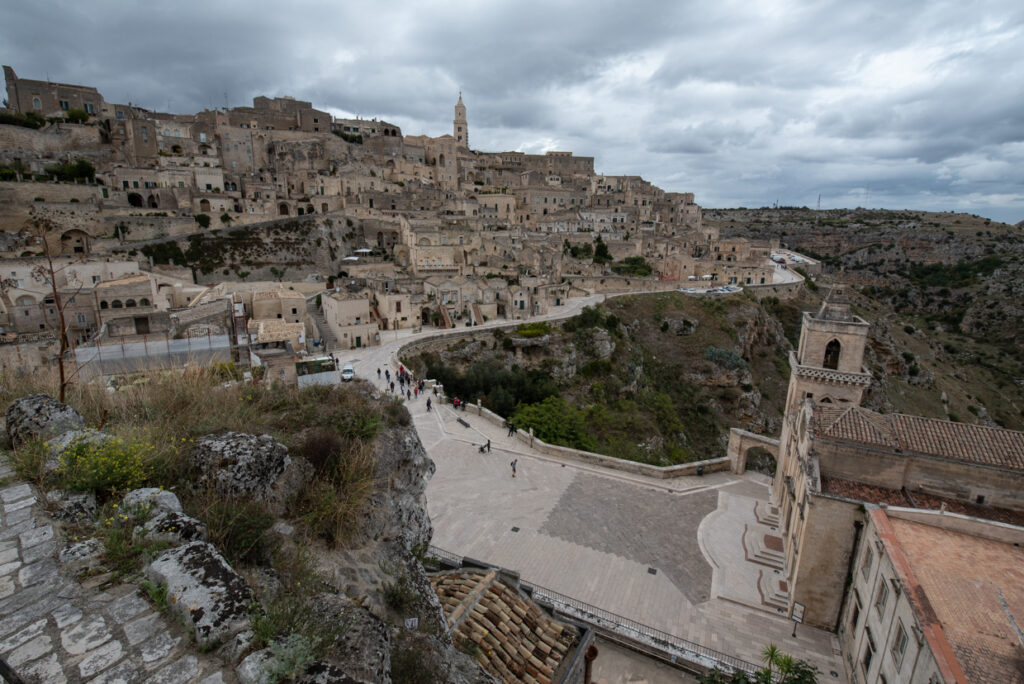
In the movies, Matera has rarely been featured as itself. Italian film maker Pier Paolo Pasolini, scouting for a location for his 1964 film Gospel According to Saint Matthew, was the first to find in the Sassi his perfect Jerusalem of the year zero. The city had no electricity, no paved roads. Families of ten lived in the cold damp caves, sleeping next to their pigs and goats. Malnutrition and Malaria, landslides and floods, and a long history of brutal feudalism made life in the Sassi short and miserable.
To Pasolini, the suffering of the Materans equaled that of the chosen people. He hired locals as amateur actors, letting his camera linger on their faces: Close-ups of creased skin, parched by an unforgiving sun, of cracked lips revealing gaps and crooked teeth. The film has become an inseparable part of Matera’s history, and a badge of honor for many. Pasolini’s Jesus, the Spaniard Enrique Irazoqui, who sadly passed away in September 2020, was declared honorary citizen of Matera.
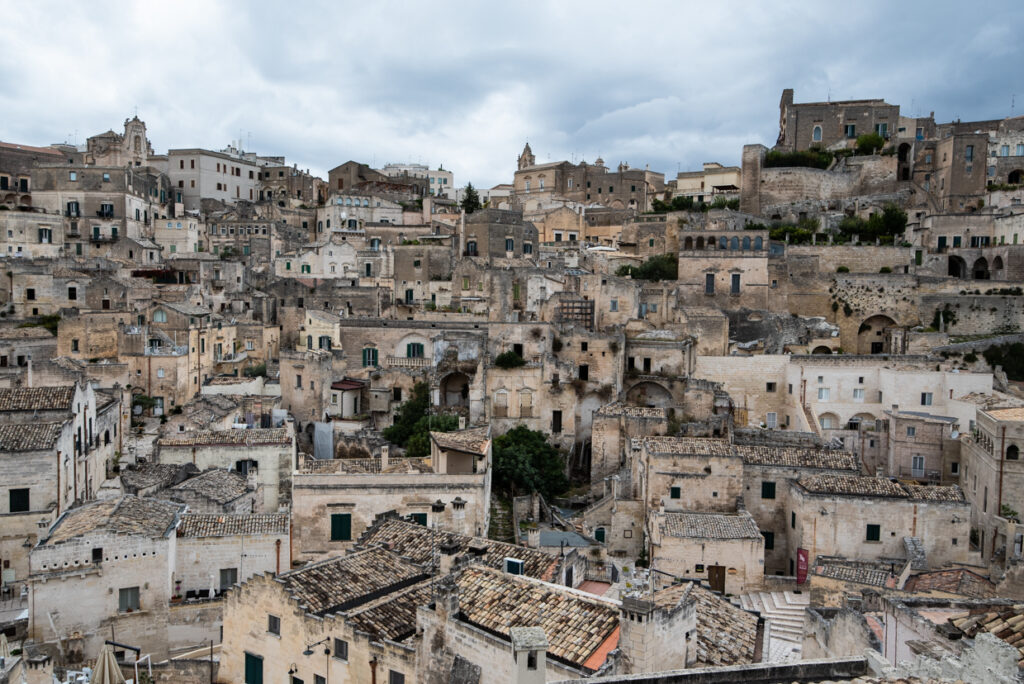
Since then, Materans have a long tradition of amateur acting. Rosario Gagliardi, a government clerk, played a disciple in Mel Gibson’s Passion of Christ, and minor parts in Omen 666 and The Nativity Story. The now 59year-old, who sports flirtatious blue eyes and a fashionable three-day stubble on his cheeks, is proud of his part-time movie career.
For others, working on the set presented a welcome, if temporary, income. Antonietta Scazzariello, who played in six films, said in an interview for the Guardian in 2004. “There’s no work. So it’s a good thing people like making films here. At least I can earn a bit of cash that way”.
For Mel Gibson’s Passion of Christ, 20,000 Materans auditioned. The 600 who got the job, were paid 60-90 Euros a day for performing under physically and psychologically taxing circumstances, braving wind and weather naked and barefoot, dying multiple times on the cross.
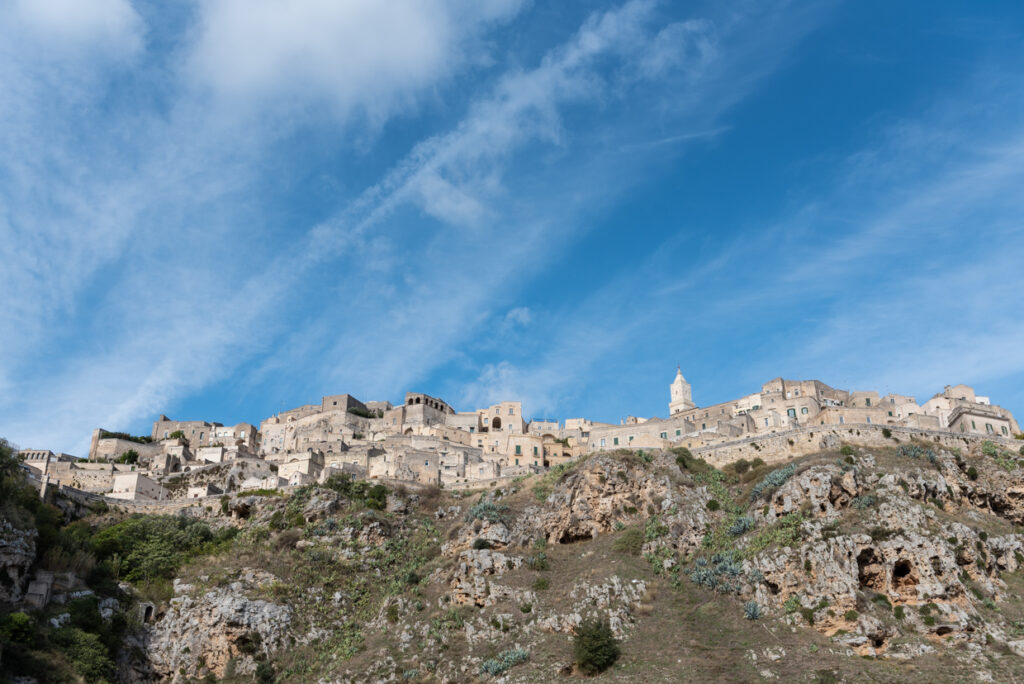
But things have changed since. By granting tax credits, the city government has attracted many major productions to Matera, each of them raising the local GDP. Materans now enjoy higher education and a higher income than the rest of the Basilicata region. Italian grips, electricians, carpenters, costume designers, makeup artists, and dressmakers find work in the Sassi.
Yet, not everyone is a fan. “Until a few years ago, the movie industry was very important for Matera,” explains travel-guide Antonio Rubino, who works for Sassiemurgia, a Materan cultural association, offering walking and historical tours.
“The first films kickstarted the renaissance of the Sassi, which led to their recognition as UNESCO World Heritage Site in 1993. But lately fame threatens to distort the city, with restaurants and hotels taking over.” Rubino fears Matera lost in commercialization. The 49year old Materan loves movies but is grateful for a new regulation that limits the number of film shoots in town. “The problem is that the Sassi are fragile.”
Rather than a movie set, the original Neolithic cave-dwellings of Matera were a model in resourcefulness and eco-sustainability. The ancient people who chiseled the caves into the stone had a complex system of collecting rain water in giant underground cisterns to irrigate their hanging gardens. They were a tightknit community that shared common sewers and ovens.
Rubino agrees with the “lentezza” movement, which abdicates mass tourism for the sake of quality and preservation. Matera being nominated European Capital of Culture in 2019 has helped to direct tourism along less destructive lines. Many caves now host artists’ workshops and IT-start ups, there is even a music conservatory, which fills the Sassi with harmony and rhythm.
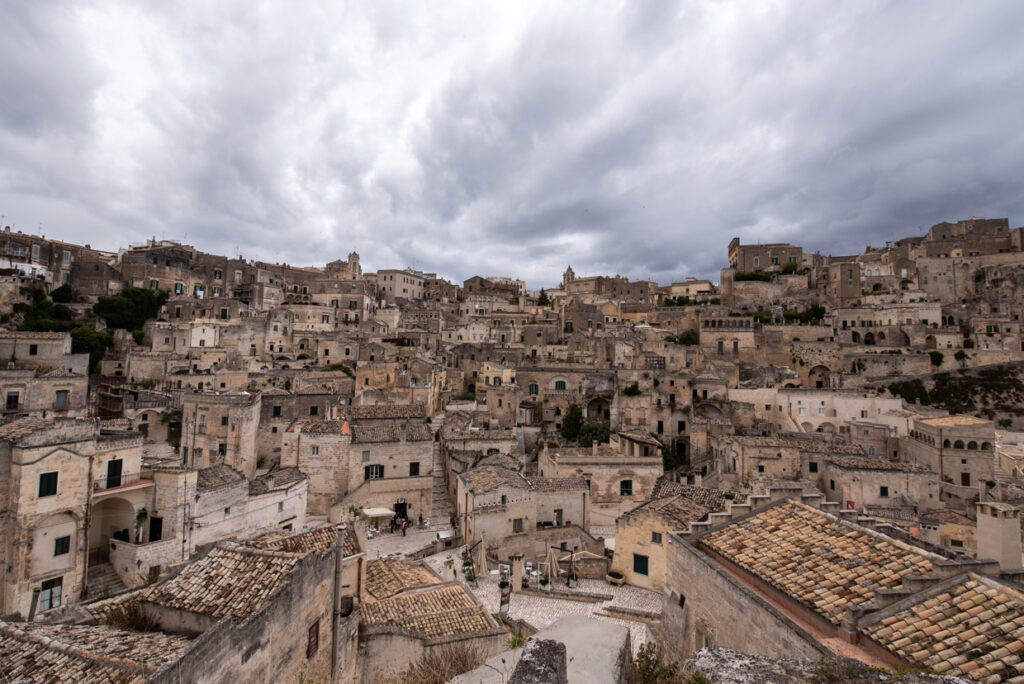
In the shadows of James Bond another film with a decidedly smaller budget was shot. Swiss director Milo Rau had set out to remake the Passion of Christ once again. But bubbling, touristy Matera was nothing like old Jerusalem, Rau says. Rather he found his Jesus on the close-by agricultural fields where thousands of undocumented African immigrants work as tomato-pickers. Together with Cameroonian human rights activist Yvan Sagnet he came up with a completely new version of Jesus’ last twelve hours. The documentary-style drama features a first black Jesus – Yvan Sagnet himself – and black African disciples. The Materans were enlisted, too, as whip swinging Roman soldiers.
The 2020 “Passion of Christ” can be streamed online, but the 2020 James Bond still has not hit theatres. Due to the Corona pandemic the release was rescheduled various times and is now announced for October 2021 (Europe) and November 2021 (US). It will most likely be a success at the box office. Bond movies do traditionally well in times of crisis.
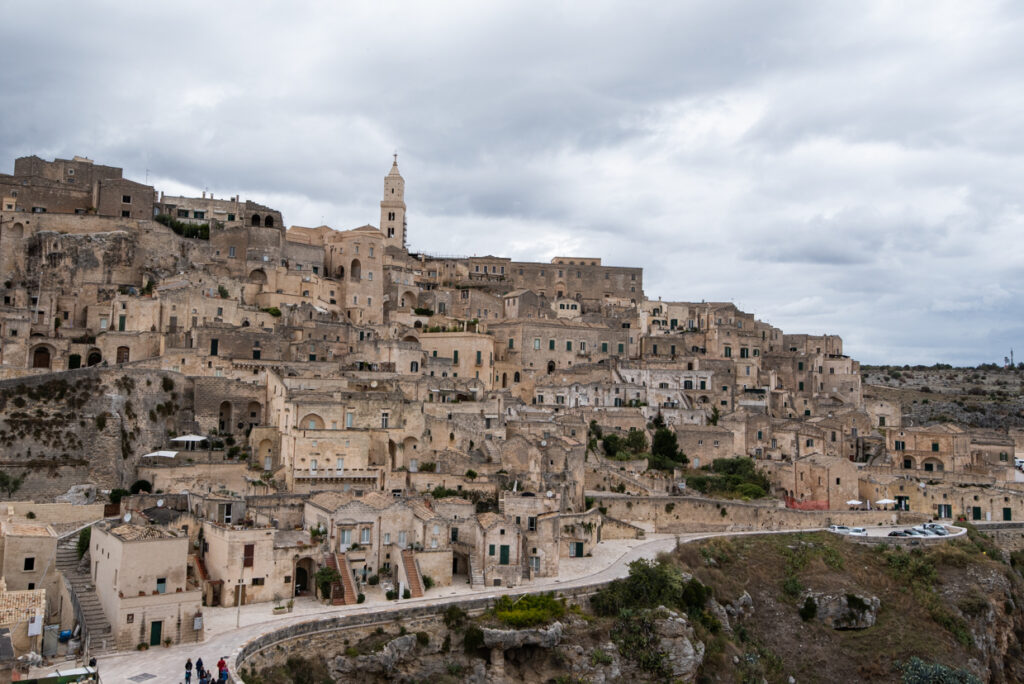
For Matera the outlook is bleak. Tourism in Italy has decreased by up to 90%, Italian economic growth is down to zero.
“My last tour was three months ago!” Rubino says. “There are no tourists from Japan and the USA. The situation is very hard.”
Now all hope is set on James Bond.
No time to die is not part of the original series by Ian Fleming, and is Daniel Craig’s last outing as 007, which begs the question: Will James Bond survive his trip to Matera? Snippets of videos locals have uploaded on social media show Daniel Craig with blood on his face on the very spot where Jesus had collapsed so many times before. Bond probably won’t get crucified, but he’ll surely save the world, and Matera, again.
